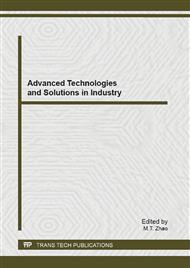p.142
p.147
p.152
p.157
p.161
p.166
p.170
p.174
p.178
Dyeing and Finishing of the Wool Regeneration Protein and Polyacrylonitrile Copolymerization Fiber
Abstract:
Partial dyeing and finishing properties of the copolymerization fiber of wool regeneration protein and polyacrylonitrile are analyzed in this article. The optimum bleaching condition is 30%H2O230g/L, Na2SiO36%(o.w.f) for 60min at 60°C.This new fiber can be dyed by acid dye and cationic dye in one-bath one-step dyeing process. Interaction between anionic surfactant NNO and cationic dye has been investigated using conductometric examinations. The results are that the mass ratio of cationic dye and NNO is 1:7-9, the ratio of anionic dye and cationic dye is 2:8 which is the same as the constituents of fiber. The method of making this special dyestuff is drying the cationic dye (liquor) and NNO (liquor) compound, and then mixed with acid dye, thus trichromatic dyestuffs have been made on the whole through experiment.
Info:
Periodical:
Pages:
161-165
Citation:
Online since:
June 2013
Authors:
Price:
Сopyright:
© 2013 Trans Tech Publications Ltd. All Rights Reserved
Share:
Citation:


